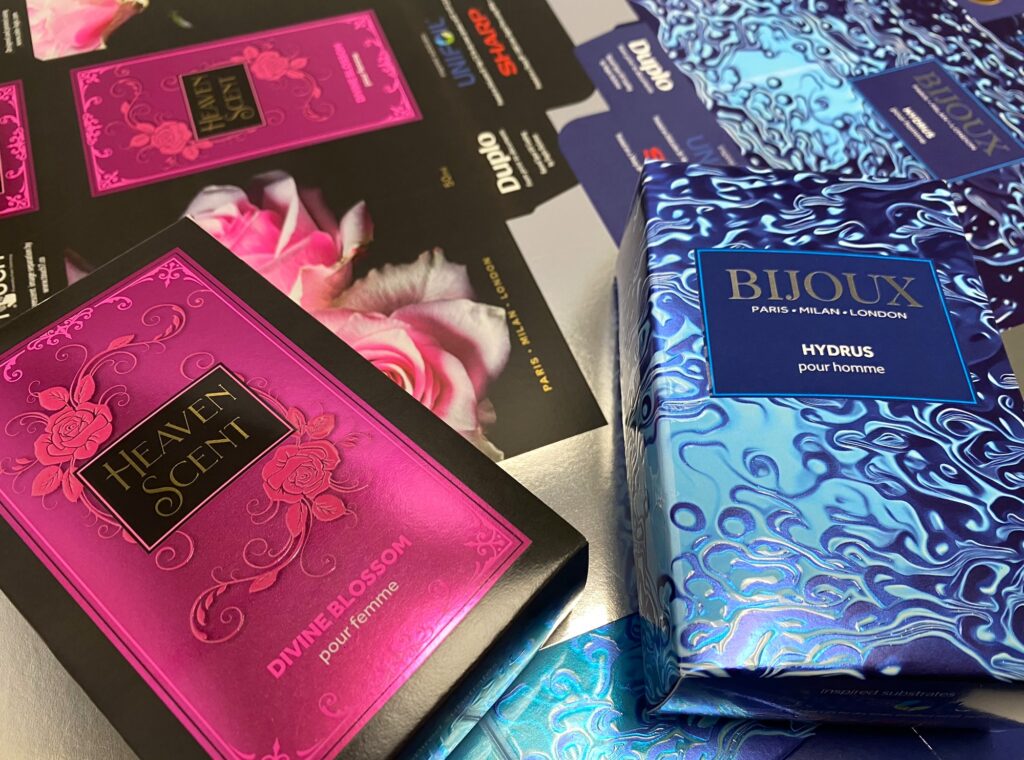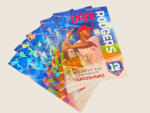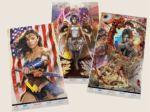When we talk about going beyond CMYK, the conversation often focuses on spot UV and traditional paper – not metallic stocks. But there are other tools available that digital print providers can add to their creative toolbox. Tools that add shimmer and sophistication. So, let’s talk a bit about specialty substrates and toners. What are they and what happens when they’re used together with spot UV?
To showcase what’s possible, Duplo USA teamed up with an impressive trio of partners: Sharp, Color-Logic, and Unifoil. By combining our technologies, we produced two standout applications – a calendar poster and a luxury packaging set – designed to demonstrate the results of layering reflective paper, white toner, and raised spot UV in short-run print.
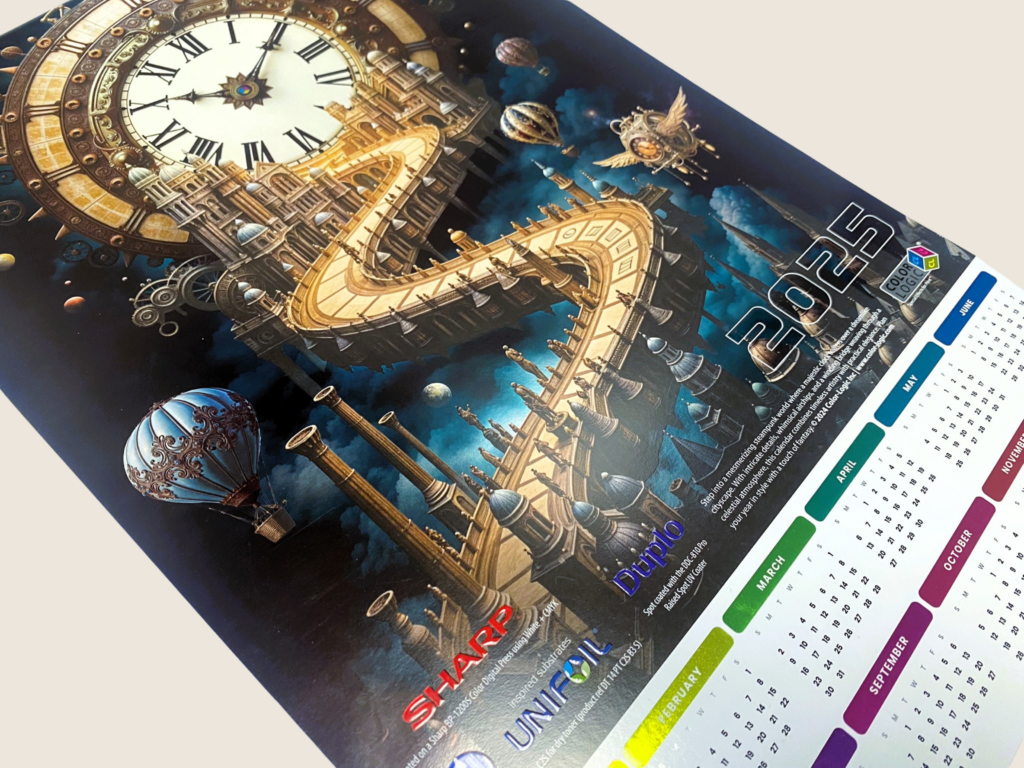
Here’s a look at the process behind these applications and how each technology added impact to the finished piece.
Specialty Paper
Specialty substrates are different than traditional coated and uncoated paper in that they come in unique surfaces, finishes, and colors. These substrates include foiled, synthetic, textured, and pearlescent papers just to name a few, and they’re used to stand out from basic print. They change how the toner appears and play a key role in how the final piece looks and feels overall.
For this project, the goal was to create elevated applications with an iridescent finish. And that meant starting with foil-like paper. The team at Unifoil recommended their Unilustre DI in 14pt C2S and in silver metallic as the substrate of choice. It’s recyclable, repulpable, and provided the perfect canvas for showing the range of printed colors.
Specialty Toners
To achieve the shimmery effect, white toner is important and a digital press with a fifth-color station is required. Presses with this capability can print more than the usual four colors. They enable the use of specialty toners such as white, gold, silver, pink, and clear. It’s a capability that allows for greater creativity and flexibility when producing high-end applications.
The team at Sharp printed the 13” x 19” metallic stock on their BP-1200S 6-Color Digital Press with incredible results. Its fifth and sixth-color stations allowed them to layer white toner as a base to make the colors pop. It also allowed for the silver media to show through specific areas and produce metallic colors.
Integral to the process was the Color-Logic Metallic Color System, a color communication software that comes bundled with the press, which helps simplify the workflow behind specialty toners. It gives designers control over metallic effects without any masking required. For the Heaven Scent box, for example, the Touch7 Neon Color System came in handy for applying fluorescent pink to the design. This tool, also supplied with the press, was essential for printing the neon colors as an overlay in the rose photo. It was printed in the accents on the front of the box too for a bolder look.
To produce this premium look, all colors – including the white toner in the underlay, the neon pink in the overlay, and the CMYK – were printed in one pass at the rated speed of 120 ppm, without slowing down or having to print in multiple passes.
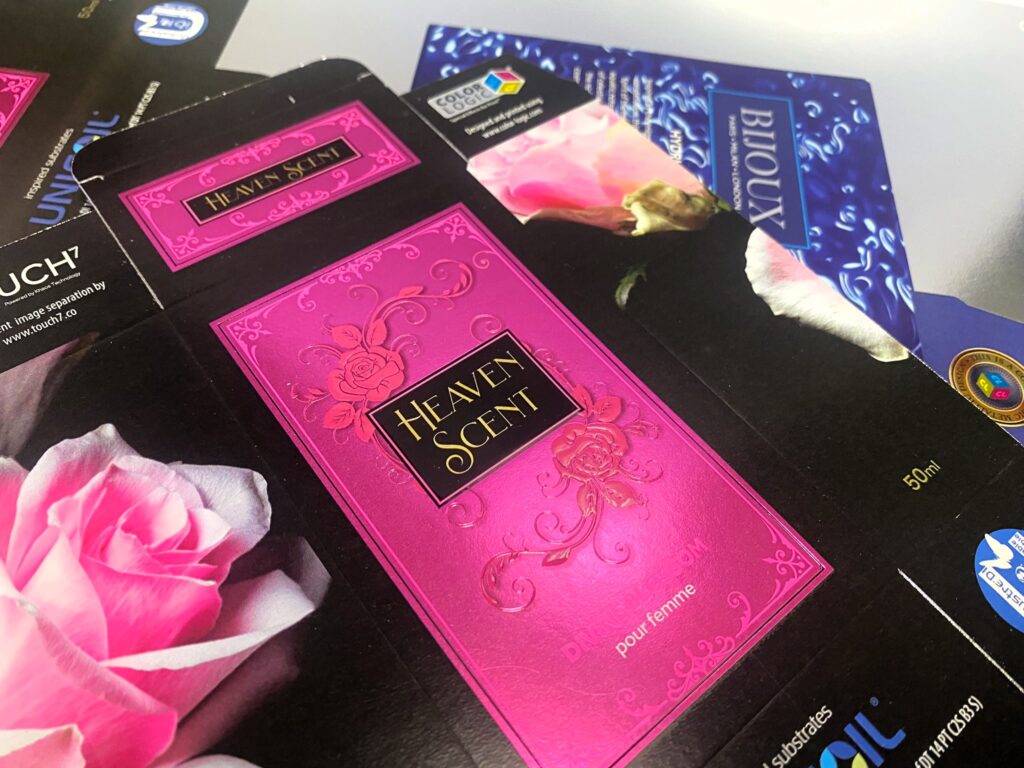
Spot UV over Metallic
Now for the finishing touches: embellishment and cutting. For the 2025 Calendar, our Duplo team used the DDC-810 Pro Raised Spot UV Coater to texturize the fine details on the clock and hot-air balloons. The high gloss brought depth and dimension to the piece. We trimmed them down to 11” x 17” using the DC-618 Slitter/Cutter/Creaser, making it a keeper for anyone taking one home.
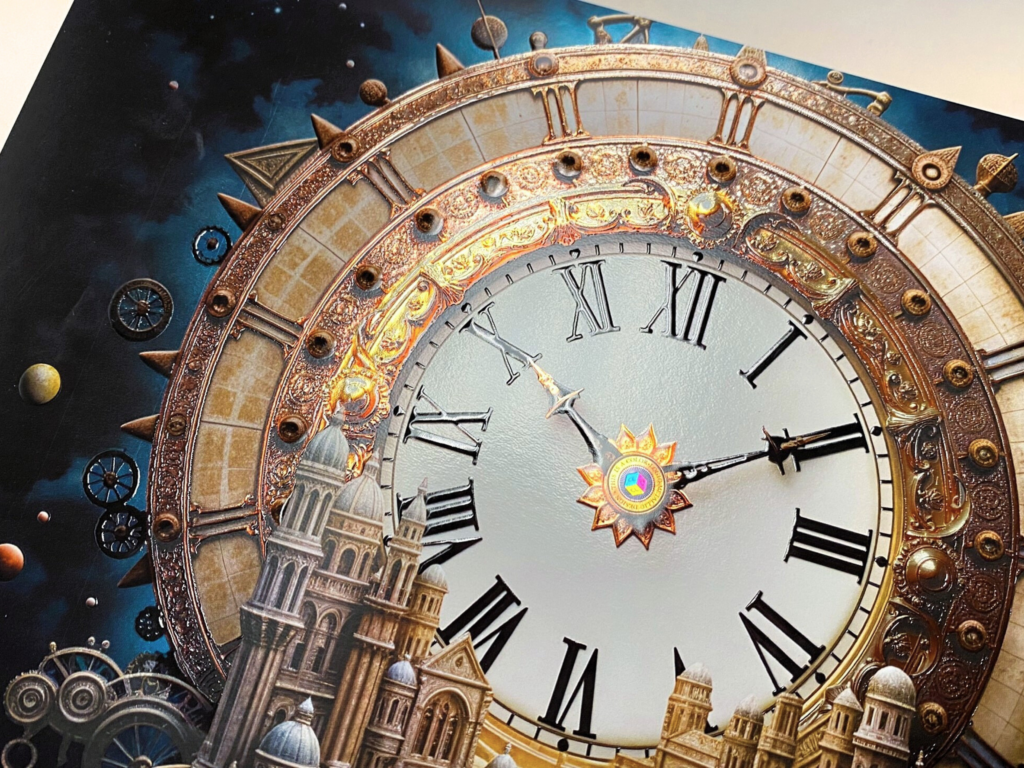
The calendar is a stunning application. What makes it stand out too are the copper-toned clock and metallic shades over the 12-month layout with radiant shades of green, blue, and red that shine in the light.
For the box set, the team applied spot UV to raise the lighter graphics from the darker background. On the Bijoux box, the blue tones and gloss finish give it a wet look to go with the theme. On the Heaven Scent box, the spot UV highlights the floral accent on the front.

For the final transformation, the flat prints were processed on either the DSM-1000 B2 Platen Die Cutter or DPC-600 PKG Digital Die Cutter. Both devices handle the job, depending on the volume.
Experiment with Layered Techniques
Combining these tools – fifth-color toner with spot UV and metallic substrates – instantly increases the wow factor that today’s print buyers are looking for (and are willing to pay for). And there’s lot of ways to use them. It’s worth experimenting with them if you have them available in your shop, or are considering investing in them.
These samples have been making the rounds at various events this year, including the ISA Sign Expo and Amplify. If you spot our booths at an upcoming show, be sure to stop by and see them for yourself!


